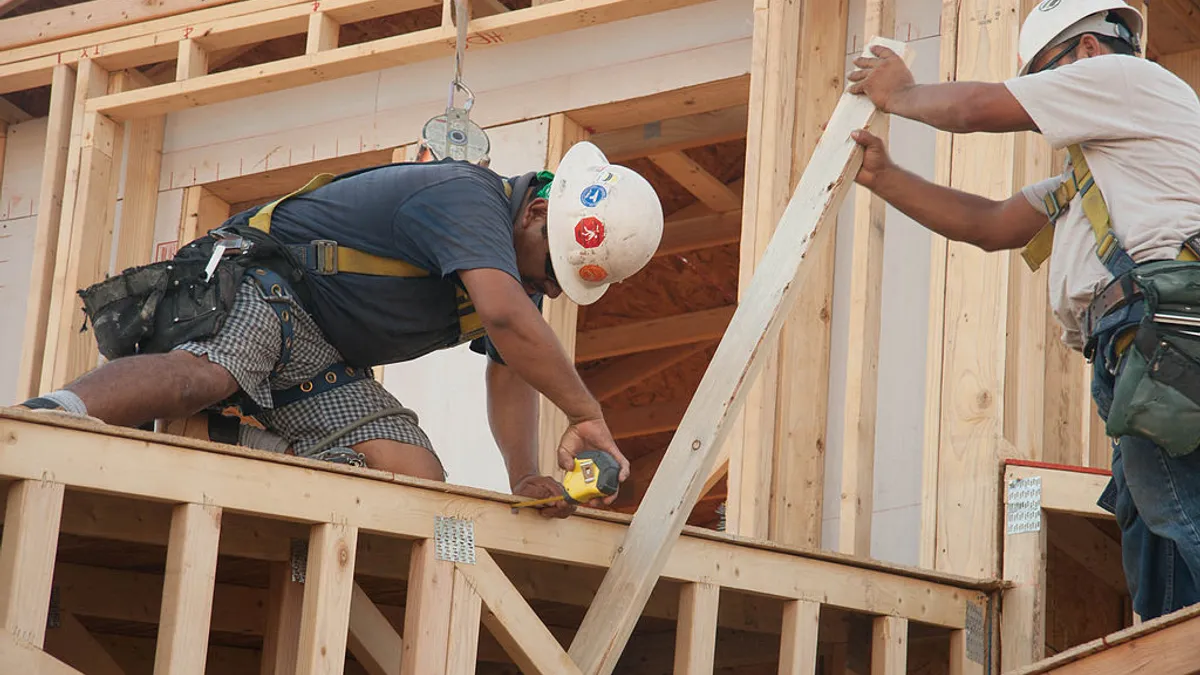Dive Brief:
- Zillow’s Home Price Expectations (ZHPE) Survey found that 67.1% of surveyed housing experts believe construction labor costs will go up due to the decline of undocumented immigration in the U.S., while only 10.6% expect those costs will go down.
- 43.5% of respondents said fewer illegal workers means more U.S.-born or other legally authorized workers will enter the residential construction workforce, but 40% said that high labor costs will force homebuilders to shift to the higher-margin, luxury end of the market to see profits.
- And 30.6% of survey participants said the declining number of undocumented workers will result in fewer new homes being built, and 20% believe demand for rental housing will diminish, resulting in a moderation of rent growth in communities that have always served undocumented immigrant populations.
Dive Insight:
In the survey, more than half of the participants said the drop in single-family construction in the last 10 years was due to high labor costs and a lack of skilled workers.
A September report from John Burns Real Estate Consulting Inc. found that the U.S. construction industry lost 570,000 Mexican-born workers since 2007, and that loss has contributed to the industry's ongoing labor shortage problems.
"The supply of homes for sale isn't keeping up with demand — especially among entry-level homes that first-time buyers want," Zillow Chief Economist Svenja Gudell said in a release. "New-home construction has been sluggish, and homes that are getting built are aimed at a higher-end clientele. If builders hire relatively more expensive U.S.-born workers, they may continue to focus on the more profitable higher end of the market."
Zillow's survey also found that 30% of respondents cited the dwindling numbers of undocumented immigrants as the cause of the lack of inventory.
Inventory concerns have continued to weigh on the residential industry, and industry analysts don't expect them to subside anytime soon. Last month, a National Association of Realtors 2015 fourth-quarter report found that U.S. home prices, driven by a lack of inventory, continued to accelerate through the quarter. Lawrence Yun, chief economist for the NAR, said, "Even with slightly cooling demand, the unshakeable trend of inadequate supply in relation to the overall pool of prospective buyers inflicted upward pressure on home prices in several metro areas."












